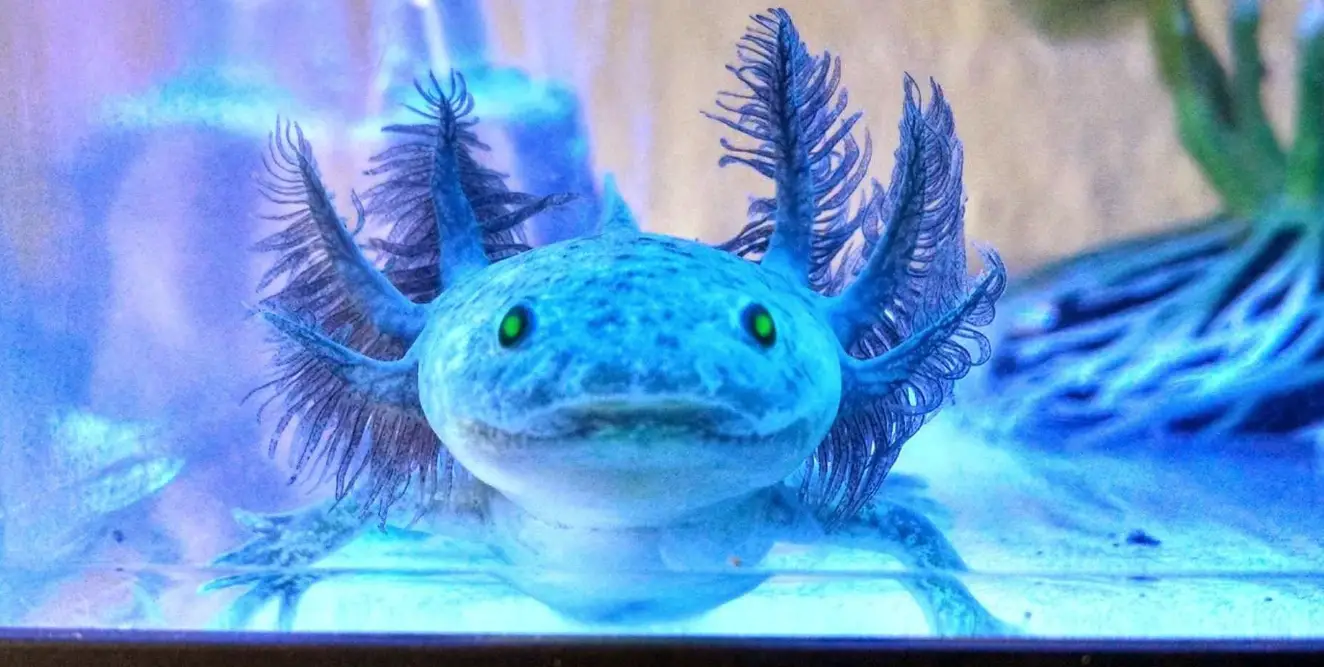What is an animal that is adorable but difficult to spell?
The axolotl! Relatively unknown until a few decades ago, axolotls have quickly become one of the world’s most sought-after pets.
At first glance, they may seem like a cross between a fish and a lizard but their incredible abilities make them one of the most fascinating species out there.
This article will tell you all about this unique amphibian and help you get to know it better.

What is an axolotl?
The axolotl is a type of salamander native to Central America and Mexico. It is the only aquatic salamander in the world.
According to legend, the Aztec god Xolotl took the form of the axolotl to hide from other gods who wanted to capture and kill him.
The axolotl became a sacred symbol to the Aztec people, who believed that it had magical regenerative powers and shapeshifting abilities.
Axolotls have feathery gills that enable them to breathe underwater and adults also have lungs that allow them to survive on land for short periods.
They are often confused with salamanders, but they are more closely related to frogs (physiologically speaking).
Some features that distinguish them from other amphibians include a lack of eyelids and a dorsal fin that spans their entire back down to their tail.
There is no denying that axolotls are adorable! Their gills look like floating feather boas and their large eyes, fat cheeks, and quirky behaviors make them very endearing.
They also have large up-turn mouths that make them seem like they are perpetually smiling. Axolotls use their cute little webbed feet to pad along the bottom of the water and swish their tails from side to side as they swim.
Why are axolotls unique?
Axolotls are unlike any other salamander in the world because they never outgrow their juvenile forms. They remain small ( stay in their larvae stage ) their whole lives and grow to a maximum length of about 12 inches.
Axolotls have an incredible property called neoteny, which allows them to reach sexual maturity without undergoing metamorphosis into adulthood. In short, they are perpetual teenagers!
Another amazing ability of axolotls is to regenerate lost or damaged body parts.
Axolotls can do this by rapidly dividing their cells to form new tissue.
Because of this unique trait, they have been extensively studied by scientists around the world.
Scientists hope to use axolotl stem cells to develop therapies that could improve the lives of people suffering from health conditions such as Parkinson’s disease.
This particularity has made axolotls known in the world of medical research, which on the one hand has contributed to their development outside their natural environment, but on the other hand, has almost caused their disappearance from their natural environment in the past.
Please note that I am personally against using animals in laboratory experiments!
Are axolotls endangered?
The Mexican axolotl species Ambystoma mexicanum is considered critically endangered by the International Union for Conservation of Nature (IUCN). Many factors have contributed to the decline of this species in the wild including demand for the dining table.
Yes, you heard it right; some people eat axolotls! Roasted axolotls are a delicacy that has been enjoyed since the time of the Mesoamericans.
While many people abstain from eating axolotls today, they are still under severe threat due to the decline of their natural habitat. Only a few thousand axolotls remain in Lake Xochimilco, their last native habitat.
A large area of their traditional habitat has been drained while the rest of it is polluted by waste and fertilizers. In addition, the introduction of farmed fish into these lakes has led to competition for food and the eggs of the axolotl being eaten.
Today, there are several initiatives in place to save the wild population of axolotls through public education, breeding and release programs, and the removal of invasive fish in axolotl habitats.
These efforts hope to ensure that the wild population will not go extinct. At the same time, captive breeding of domestic axolotls is becoming increasingly common and plays an important role in supplying the pet trade.
Can I keep an axolotl as a pet?
It is illegal to own axolotls in some states in the US. If you live in a state where it is legal to own an axolotl, make sure that you acquire the animal from a registered breeder or rescue organization.
Never buy axolotls that were caught in the wild! Axolotls can live up to 10-15 years in captivity so be sure that you are up for the commitment.
You must provide your axolotl with a suitable living environment. You need at least a 20-gallon fish tank that is kept away from heat and direct sunlight. The substrate of the tank should be coarse gravel and the water at least as deep as your axolotl is long.
Treat the water with an aquarium water conditioner to remove harmful chemicals and keep the water temperature between 57- and 68 degrees Fahrenheit.
Feed your axolotl a variety of fresh food such as brine shrimp, tubifex worms, earthworms, or frozen fish food. Only give them food from aquarium stores as worms or fish collected from the wild may carry parasites.
Most adult axolotls only need to eat twice or thrice a week and may prefer to eat in the evenings. Remove any uneaten food after a few hours to prevent it from dirtying the water.
Final Thoughts
Axolotls are impressive creatures whether you view them in an aquarium, in their natural habitat, or in your own home. We hope that conservation efforts will be able to bring their wild populations back. In the meantime, we will just have to make do with enjoying their company in captivity.


